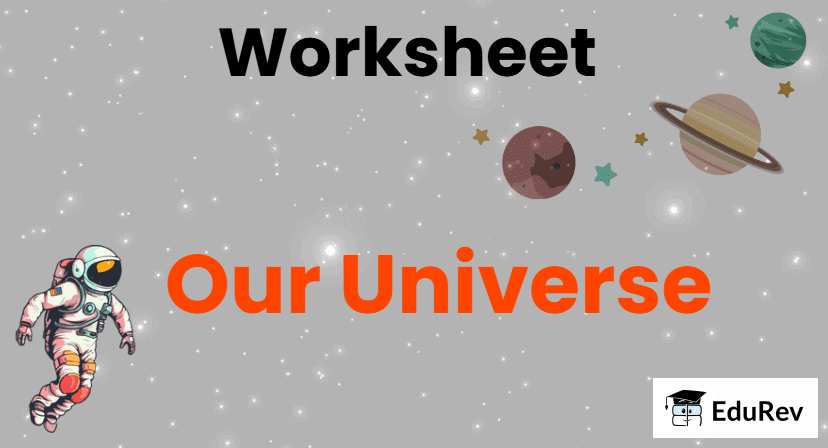Our Universe - 1 Class 3 Worksheet SST

Q1: Multiple Choice Questions (MCQs)
1. What is the name of our galaxy?
a) Andromeda
b) Milky Way
c) Solar System
d) Universe
2. Which planet is known as the "Red Planet"?
a) Earth
b) Jupiter
c) Mars
d) Saturn
3. What is the largest planet in our solar system?
a) Mercury
b) Jupiter
c) Venus
d) Neptune
4. What causes day and night on Earth?
a) The revolution of the Earth
b) The rotation of the Earth
c) The movement of the Moon
d) The heat from the Sun
5. How many planets are there in our solar system?
a) Seven
b) Eight
c) Nine
d) Ten
Q2: Match the following

Q3: True or False
1. The universe is small and has only a few stars.
2. The Earth is the only planet in the solar system that has life.
3. The Sun is bigger than all the planets in the solar system.
4. There are ten planets in the solar system.
5. The Earth takes 365 days to complete one revolution around the Sun.
Q4: Answer the following Questions
1. What is the universe?
2. Why is Earth special?
3. What is a galaxy?
4. How does the Earth move around the Sun?
5. What is the function of the Sun?
Q5: Imagine and Write
If you could visit any planet in our solar system, which one would you choose and why? Write 3-4 sentences.
You can find Worksheets Solutions here: Worksheet Solutions: Our Universe - 1
FAQs on Our Universe - 1 Class 3 Worksheet SST
| 1. What is the Big Bang theory and how does it explain the origin of our universe? |  |
| 2. How do scientists study the universe and its origins? |  |
| 3. What is dark matter and why is it important in our understanding of the universe? |  |
| 4. What is the fate of our universe according to current scientific theories? |  |
| 5. Are there other universes beyond our own? |  |






















